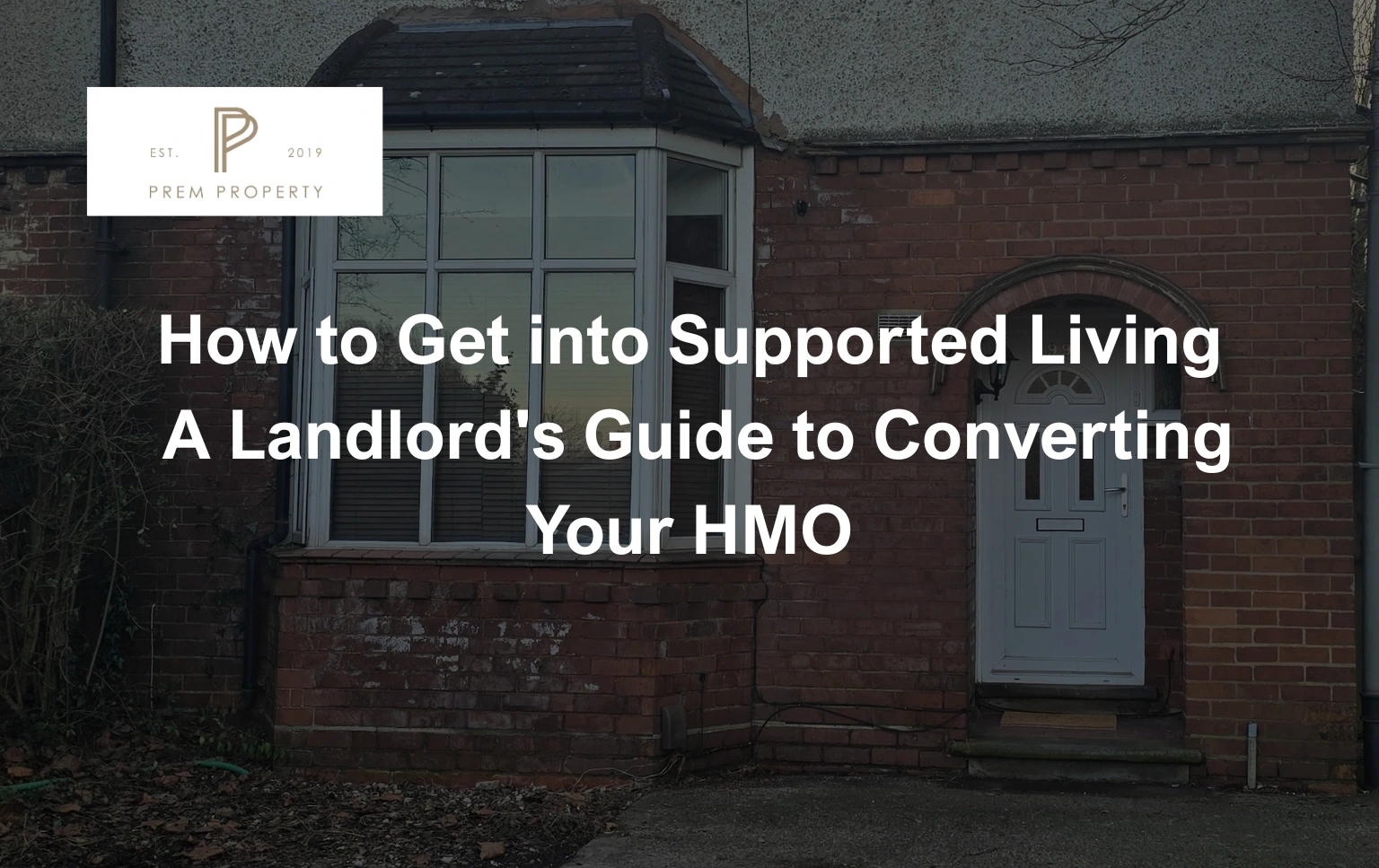Managing an underperforming HMO (House in Multiple Occupation) can frustrate any landlord. Tenant churn, void periods and the unpredictable nature of rental income can leave you searching for a solution. One increasingly popular solution in the property market is converting your HMO into supported living accommodation. This transformation not only improves your financial returns but also helps you make a positive impact on the community.
Here’s how you can convert your HMO into supported living, the numerous benefits and how to get started. We also highlight the Charlotte Road case study, showing how this conversion led to higher rental income, guaranteed rent and minimal maintenance obligations.
What is Supported Living?
Supported living refers to accommodation that provides individuals with the necessary support to live independently. People with disabilities, mental health issues or other support needs usually require such properties. Supported living arrangements can range from small units for one or two people to larger shared homes. Care providers or housing associations manage these properties, ensuring tenants’ needs are met. Typically, local authorities fund supported living, which means the rent is often guaranteed.
As a landlord, you can convert your underperforming HMO into supported living accommodation, giving you a stable income while benefiting the community. Supported living proves particularly beneficial for landlords who want long-term tenants and a predictable rental income.
Why Convert an HMO to Supported Living?
Several benefits follow the decision to convert your HMO to supported living. Below, we’ve outlined the key advantages landlords often experience after the conversion:
1. Higher, More Stable Income
Many landlords choose to convert their HMOs to supported living because of the higher, more stable income. After the conversion, many report a 40% increase in net rental income. The increase arises because supported living providers typically offer long-term leases, backed by local authority funding or care organisations. This provides landlords with more stable, reliable income compared to renting to students or other temporary tenants.
Moreover, rent is often guaranteed, irrespective of the number of tenants occupying the property. With traditional HMOs, landlords can face void periods or delayed rent payments. However, supported living provides a guarantee that landlords will receive rent on time.
2. Guaranteed Rent
Supported living providers usually pay the rent directly to landlords, no matter how many tenants occupy the property. This means landlords don’t need to worry about void periods, which can otherwise cause significant financial strain. Supported living ensures a steady and predictable income stream, with rent paid regardless of occupancy.
Additionally, you avoid the high turnover that often plagues traditional HMOs. Tenant churn is reduced in supported living, leading to fewer vacancies and greater stability.
3. Minimal Maintenance
Another significant benefit of converting an HMO into supported living is the minimal maintenance required. Supported living providers usually take full responsibility for the internal upkeep of the property, removing the hassle and cost of managing repairs and maintenance yourself.
Most providers ensure that the property is maintained to meet the required care standards, so landlords don’t need to worry about managing maintenance issues.

Real Results: The Charlotte Road Case Study
To better illustrate the advantages of converting an HMO into supported living, consider the Charlotte Road case study.
Josh, a professional landlord, approached Prem Property to help transform his underperforming 5-bedroom HMO in South Birmingham. Previously rented to students, the property had become burdened with void periods and market saturation. Josh needed a solution that would bring in more reliable income and eliminate the stress of tenant turnover.
Prem Property guided Josh through the conversion process, helping him secure a compliant care provider and ensure the property met all necessary care standards. As a result, Josh saw a 40% increase in net rental income, zero maintenance obligations, and the assurance of a long-term lease. By making the conversion, Josh turned his underperforming HMO into a steady income stream.
Key Landlord Questions (And the Truth)
Landlords often have several questions when considering converting an HMO into supported living. They wonder about the process, the potential impact on the neighbourhood, and whether the property will be maintained properly. Below, we’ve answered some of the most common questions:
1. Will it impact the neighbourhood?
Landlords frequently worry that converting an HMO into supported living will negatively affect the neighbourhood. However, this is generally not the case. Supported living providers collaborate closely with the local community, liaising with neighbours and addressing any concerns. Providers often establish a contact point for neighbours, ensuring that issues are swiftly addressed.
2. Will it still be maintained well?
Yes, supported living properties are maintained to a high standard. Care providers who manage these properties ensure they meet all necessary care standards, which typically includes regular maintenance and repairs. This means landlords don’t need to worry about managing upkeep themselves.
3. Will I lose my HMO licence?
In some instances, converting an HMO to supported living may affect your HMO licence. However, this depends on the provider and the specific circumstances. The income and stability gained from converting to supported living usually outweigh the potential loss of an HMO licence.
What Makes a Property Ideal for Supported Living?
Not every property is suitable for conversion to supported living. However, certain types of properties are better suited for transformation. Ideal properties typically have the following features:
- Ground-floor bedroom and bathroom access
- Off-road parking
- Spacious layout and private garden
- C2 use class or adaptable HMO properties
These features make the property more attractive to supported living providers, as they meet the needs of tenants requiring additional support.
Where’s the Demand Right Now?
There is a growing demand for supported living accommodation in areas such as Birmingham and Leicester. These locations have seen increased funding for care-based tenancies and a growing need for supported living properties.
By converting your HMO into supported living in these areas, you can capitalise on the demand and secure a reliable income stream.
Why Work With Prem Property?
Prem Property specialises in converting HMOs into supported living accommodation. We are not just another guaranteed rent company – we focus on creating meaningful, purpose-driven investments for landlords. Our services include:
- C2 Children’s Homes
- Specialist Supported Housing
- Community-sensitive landlord engagement
- Full compliance vetting
Our proven track record demonstrates that with the right property and strategy, every landlord can turn their HMO into a stronger income stream while making a positive impact.
Ready to Talk?
If you’re ready to find out whether your HMO is suitable for supported living, book a discovery call with us today. We will guide you through the conversion process and help you unlock the full potential of your property.
Visit premproperty.co.uk or book directly via our social channels to get started.
Converting an underperforming HMO into supported living provides landlords with a reliable income stream, guaranteed rent, and minimal maintenance obligations. It also allows landlords to positively impact their community while boosting their rental income. If you’re a landlord looking to make the most of your property, working with specialists like Prem Property can help ensure a smooth and successful conversion.

